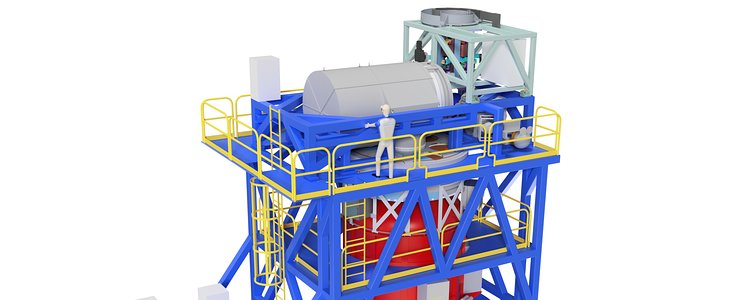Announcement
ELT’s HARMONI spectrograph passes Preliminary Design Review
Cutting-edge instrument passes critical tests and gains powerful adaptive optics system
20 December 2018
HARMONI, one of the first-light instruments for the Extremely Large Telescope (ELT), has successfully completed the Preliminary Design Review process (PDR). During a week of intense discussions with the HARMONI consortium at the end of 2017, ESO and community experts examined whether the instrument could achieve its highly ambitious science goals. They assessed the design of the instrument's optics, mechanics, software, and electronics, as well as its operational concepts — in the process identifying some technical issues which required further work. The HARMONI team has since then completed all the tasks identified by the Review and the instrument has now formally passed its PDR. By completing this vital step, the instrument can progress to the detailed design phase, aiming to be ready for cutting-edge observations when the ELT sees first light.
As well as passing this major milestone, HARMONI is also set to gain a powerful new adaptive optics system. The ESO Council recently gave green light to continue developing the Laser Tomographic Adaptive Optics (LTAO) system for HARMONI. The LTAO was originally deferred to a later phase of the telescope project. However, given its importance to HARMONI and the ELT’s science goals, and with the availability of additional funds from ESO and the HARMONI Consortium, ESO has been authorised to continue with this module. The LTAO system will make use of the ELT’s laser guide stars to allow HARMONI to acquire ultra-sharp images of astronomical objects anywhere in the sky.
HARMONI — the High Angular Resolution Monolithic Optical and Near-infrared Integral field spectrograph — will be the ELT’s workhorse instrument for visible-light and near-infrared spectroscopy. It is an integral field spectrograph, and will simultaneously acquire spectra at 30 000 adjacent points on the sky to map an astronomical object over a wide range of wavelengths. It is one of the first in a new class of massive astronomical instruments — HARMONI will still stand an impressive 8 metres tall, measure 10 metres long by 6 metres wide, and weigh in at a mighty 40 tonnes.
The design of HARMONI makes it easy to calibrate and operate, providing the ELT with "point-and-stare" spectroscopic capabilities ideally suited to fully exploit the scientific potential of the telescope in its early years. HARMONI is part of the first-light instrument suite, which also covers imaging capabilities with MICADO/MAORY, and mid-infrared capabilities with METIS.
More Information
The HARMONI Consortium consists of six main partners, and a number of associate institutes. The main partners are the University of Oxford (UK), the Science and Technology Facilities Council’s UK Astronomy Technology Centre (UK), the Centre de Recherche Astrophysique de Lyon (France), the Laboratoire d'Astrophysique de Marseille (France), the Instituto de Astrofísica de Canarias (Spain), the Centro de Astrobiologia (CSIC - INTA) (Spain), and ESO. Durham University (UK), currently an associate, will soon become a full partner. Other associate institutions are: the Office National d'Etudes et de Recherches Aérospatiales (France), L'Institut de Recherche en Astrophysique et Planétologie (France), Science and Technology Facilities Council’s RAL Space (UK), and L’Institut de Planétologie et d’Astrophysique de Grenoble (IPAG).
Links
Contacts
Sebastian Egner
ESO HARMONI Project Manager
Garching bei München, Germany
Tel: +49 89 3200 6279
Email: segner@eso.org
Joël Vernet
ESO HARMONI Project Scientist
Garching bei München, Germany
Tel: +49 89 3200 6579
Email: jvernet@eso.org
Calum Turner
ESO Public Information Officer
Garching bei München, Germany
Tel: +49 89 3200 6670
Email: pio@eso.org
About the Announcement
| Id: | ann18092 |


